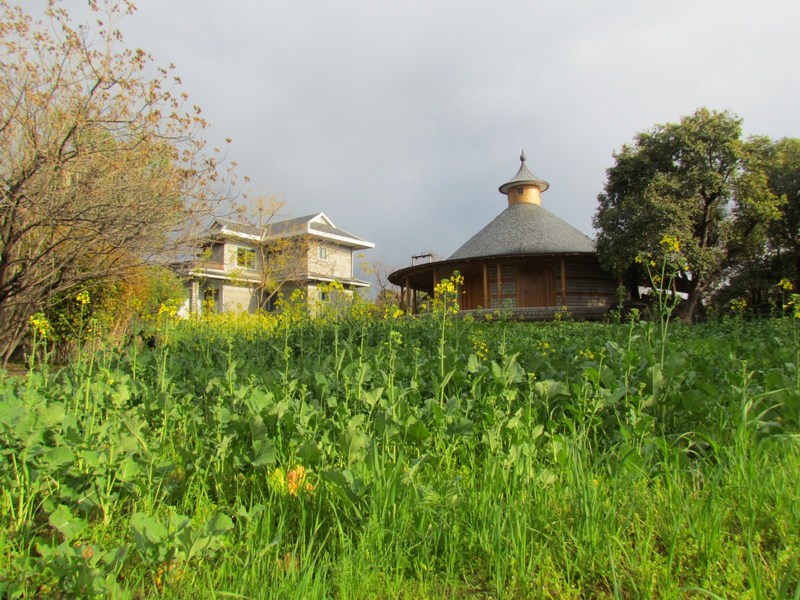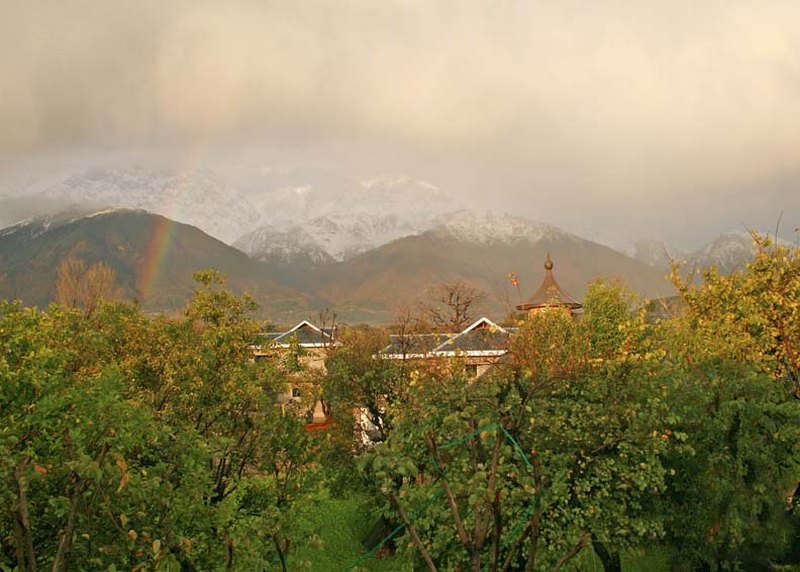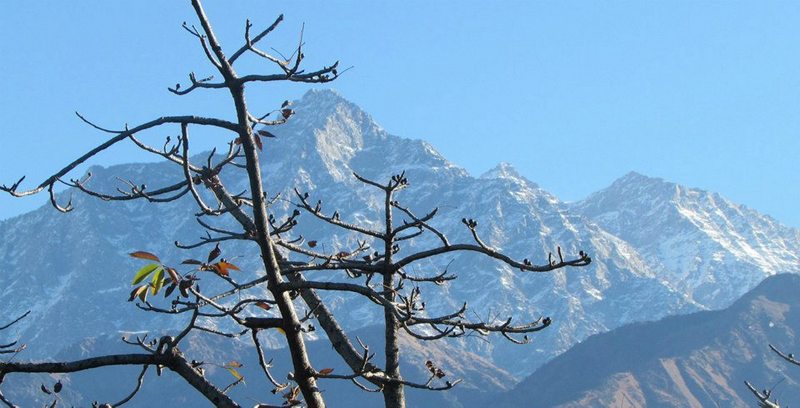The seasons at Osho Nisarga have their uniqueness. Unpredictable is the only word that can describe this uniqueness. There are days when one can experience very miraculously all the seasons in a single day. First the beautifully bright sunrise over the mountains and next hour it can change to sky being overcast with dark clouds; and then gentle drizzle to ferocious rains. And lo and behold, the next hour, the majestic rainbows spread across the mystical sky. Later you see the gentle glow of sunset, making the whole range of Dhualadhar mountains radiating golden hue enthralling one’s heart. Winter, Spring, Summer, Monsoon, or Fall; each season has its own individual and unique character in Dharamshala.
Fresh snow is expected to begin falling in the higher elevations above Dharamshala over the Dhauladhar mountains in October. But the first snow of the winter season may fall around second or third week of December. The snow fall will continue throughout January-February, or even March. During the winter, the days are pleasant and sunny, but the nights are real freezing.
In March and April months, it is spring time and the weather becomes quite pleasant and mild, though the possibility of chilly nights remains. This is the fertile harvest season of mustard flowering and maturing wheat. By May and June the days become warmer and gradually becoming more and more hotter in lower Dharamsala. While the heat in most regions of India can be intense, the cooler temperatures of Dharamshala offer a refreshing and welcome change. Summer Monsoon Rains arrive in July but sometimes, as early as June, lasting through August and mid Septmeber. Dharamsala often receives the highest total rainfall in all of Himachal Pradesh.
The fall months of September, October, and November bring cooler drier weather, with warm days and progressively cooler nights.





